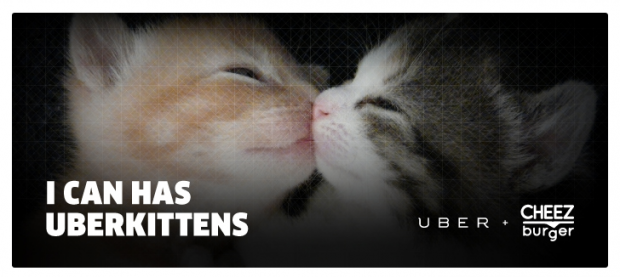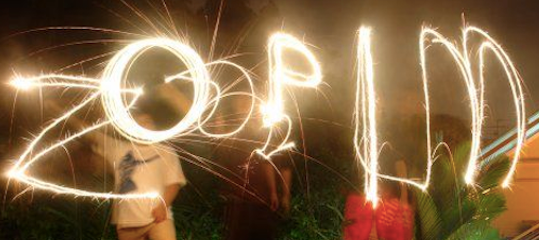 Your code can be clean as a whistle and your software deployment on-time, but if you’re a startup, branding is as vital to your success as any non-crashing app. The following trends are discussed through a frame of Lean Startup practices, relevant to any startup.
Your code can be clean as a whistle and your software deployment on-time, but if you’re a startup, branding is as vital to your success as any non-crashing app. The following trends are discussed through a frame of Lean Startup practices, relevant to any startup.
I sat down with the one-in-a-million Laura Busche, author of the upcoming book Lean Branding, at the recent Lean Startup Conference in San Francisco. We talked about what she sees as important branding trends for 2014. Those trends follow below, in both text and video formats.
You’ll find one additional surprise trend covered below, the video portion of which you can see in the Top Lean Branding Trends for 2014 compilation video below.
Are there any patterns within the nine trends discussed? Considered as a whole, a feeling of intimacy and intrigue certainly stand out. The intimacy element comes in the form of big brands trying to let customers feel closer to them by acting like smallish local brands, as well as the intimacy of working directly with customers to create the message of a brand (crowdsourcing) rather than lecturing potential customers about the merits of a brand. The intrigue element comes in the form of the use of images rather than words to communicate brands, playing on immediate emotional response, and also from brands surprising customers with their unusual personalities and intentional quirkiness, as well as by turning up in customer conversations to solve problems.
1. The brand as therapy [00:01]
Expect to see brands begin to employ a message of self-help this year. Whereas some brands have positioned their brands on price and others on features, the future is all about lifestyle, feeling good, being better, and the brand as a therapeutic force. Take the air travel category, for example: whereas Ryanair trades on cost, jetBlue trades on its features.  But when it comes to feeling like part of something, feeling like a person, that’s where Virgin comes in and delivers on personality and personal identification.
But when it comes to feeling like part of something, feeling like a person, that’s where Virgin comes in and delivers on personality and personal identification.
2. Brands will crash customer conversations [00:39]
For some time now, brands have been listening to and taking part in the conversations that their customers were having with friends, family, and colleagues on social media. This year you can expect to see brands intervening with a more of a focused, problem-solving approach. The key to doing this well will be to slip into the conversation without irritating the customers you’re trying to please. Laura calls this “graceful intervention.”
3. A more wholistic brand experience [01:58]
Don’t you loathe it when someone behaves out of character, out of line with what you’ve come to expect from them and their personality? Disconnects like that are disorienting. The same is true of brands. Customers want consistency. When a customer books a trip online and the experience is positive (because it was a seamless process to book their ticket and add a hotel online) they expect that seamlessness to extend to the in-person experience at the airport. So when it gets all Dr. Jekyll and Mr. Hyde at the airport, the customer is not going to feel very forgiving. Brands will adapt more fully this year to the reality of existing in various realms, virtual and physical. Laura says we can expect to see brands paying a lot more attention to delivering a seamless experience across the various points where customers intersect with their brand, whether offline or on.
4. Big brands will act small [02:33]
When Wallmart starts to focus customers’ attention on its local products, you can bet that a paradigm has shifted in the market landscape. Laura says we can expect to see more big brands, brands with global footprints, begin to narrow their scope and begin working at establishing a feeling of closeness, of locality, with their customers. Starbucks, too, is doing this in Colombia, which Laura discusses in the clip below and you can read more about here.
5. You’ll exploit the designer’s toolkit [04:33]
Long, deep surveys can deliver interesting customer data, only sometimes too late to be acted upon. This year you can expect to see more disciplines that usually do long form research begin to exploit the designer’s toolkit: agile research practices. Statistical analysis has its place and value, unquestionably, but such research practices will be supplemented increasingly this year by qualitative techniques and “design thinking.” In this way, brands will begin borrowing from designers’ toolkits, something that research firm IDEO has done.
6. Brands will play to Gen Y’s nostalgia [06:09]
If you can believe it, Gen Y is becoming nostalgic for the Internet. They are growing up, getting married, and setting down roots. In so doing, they’re reflecting on their childhoods with a nostalgic mind. Brands have noticed. Brands see that Gen Y is nostalgic for Internet history, their first email client, and their first searches on a browser. One brand, Internet Explorer, played on this nostalgia in their Gen Y-targeted ad, Child of the 90s.
7. Images will replace words [07:14]
You can expect a shift from copy to image as the primary messaging of brand image this year. The use of image will become much more pronounced this year as more brands see and act on visual opportunities to communicate their message, not just photo but video, too. Brand managers will begin to think more like designers, reading up on color psychology, use of white space and object positioning in an image, much like stylists, rather than just copy.
8. Brands will give personality a twist [08:50]
Laura knows how hard a person with the same name as millions must work to stand out. Brands, too, struggle with this. How will brands stand out from the clutter this year? Personality!  Customers will notice unexpected personality twists from more brands this year, which will be most visible from typically “boring” categories, like air travel. An airline is expected to be serious, safe, and professional. But Virgin doesn’t fall in line with that thinking, do they? They have a safety video that has gone viral because it’s so entertaining. Another example of played-up personality in a typically boring category (coupons) is Groupon, which plays on irony, sarcasm, and wit. Uber, too in its UberKittens campaign.
Customers will notice unexpected personality twists from more brands this year, which will be most visible from typically “boring” categories, like air travel. An airline is expected to be serious, safe, and professional. But Virgin doesn’t fall in line with that thinking, do they? They have a safety video that has gone viral because it’s so entertaining. Another example of played-up personality in a typically boring category (coupons) is Groupon, which plays on irony, sarcasm, and wit. Uber, too in its UberKittens campaign.
9. The message will be crowdsourced [11:40]
These days anyone can find a way to learn to “produce” a video by buying a camera, downloading software, and watching a few training videos. “Hmm, that give me an idea!” says the brand manager. “Let’s have the customers make our commercials.” Brands are keen to tap into the combined enthusiasm and talent of crowds to promote their offerings. Laura says we can expect to see crowd sourcing taken to the next level this year, including crowdsourcing ideas for campaigns and even final product (commercials), as Airbnb did with their Hollywood and Vines commercial.
Surprise! What looks like a Silicon Valley startup, walks like one…
…but really isn’t? The answer: Asian and Latin American startups. [13:16]
According to Laura, we can expect to see more startups come to the marketplace that appear to be Silicon Valley-born and raised, but are so not. A few examples are Zopim from Singapore, which was started by 4 entrepreneurs who met in the Bay Area while studying abroad in the Bay Area, Cacoo, from Japan, and Fuzel App, from Vietnam.  This business trend is not only fascinating but has its own competitive advantage; there are cost advantages to splitting resources, hiring local Asian or Latin American development talent while spending money on the communications pieces of the business by hiring best-of-breed talent in San Jose and San Francisco. Laura calls this the Camouflage Effect. “American customers are not going to realize at a glance where these companies are actually based,” she says. In Latin America, there’s Hash, from Panama (also known as Innovative Ventures S.A.); WeHostels, originally founded in Argentina and Colombia and just acquired by Boston-based StudentUniverse; and Socialtools from Argentina.
This business trend is not only fascinating but has its own competitive advantage; there are cost advantages to splitting resources, hiring local Asian or Latin American development talent while spending money on the communications pieces of the business by hiring best-of-breed talent in San Jose and San Francisco. Laura calls this the Camouflage Effect. “American customers are not going to realize at a glance where these companies are actually based,” she says. In Latin America, there’s Hash, from Panama (also known as Innovative Ventures S.A.); WeHostels, originally founded in Argentina and Colombia and just acquired by Boston-based StudentUniverse; and Socialtools from Argentina.
Learn more about Laura Busche. Her book Lean Branding is part of the Lean Series, edited by Eric Reis. It will be released in 2014.
